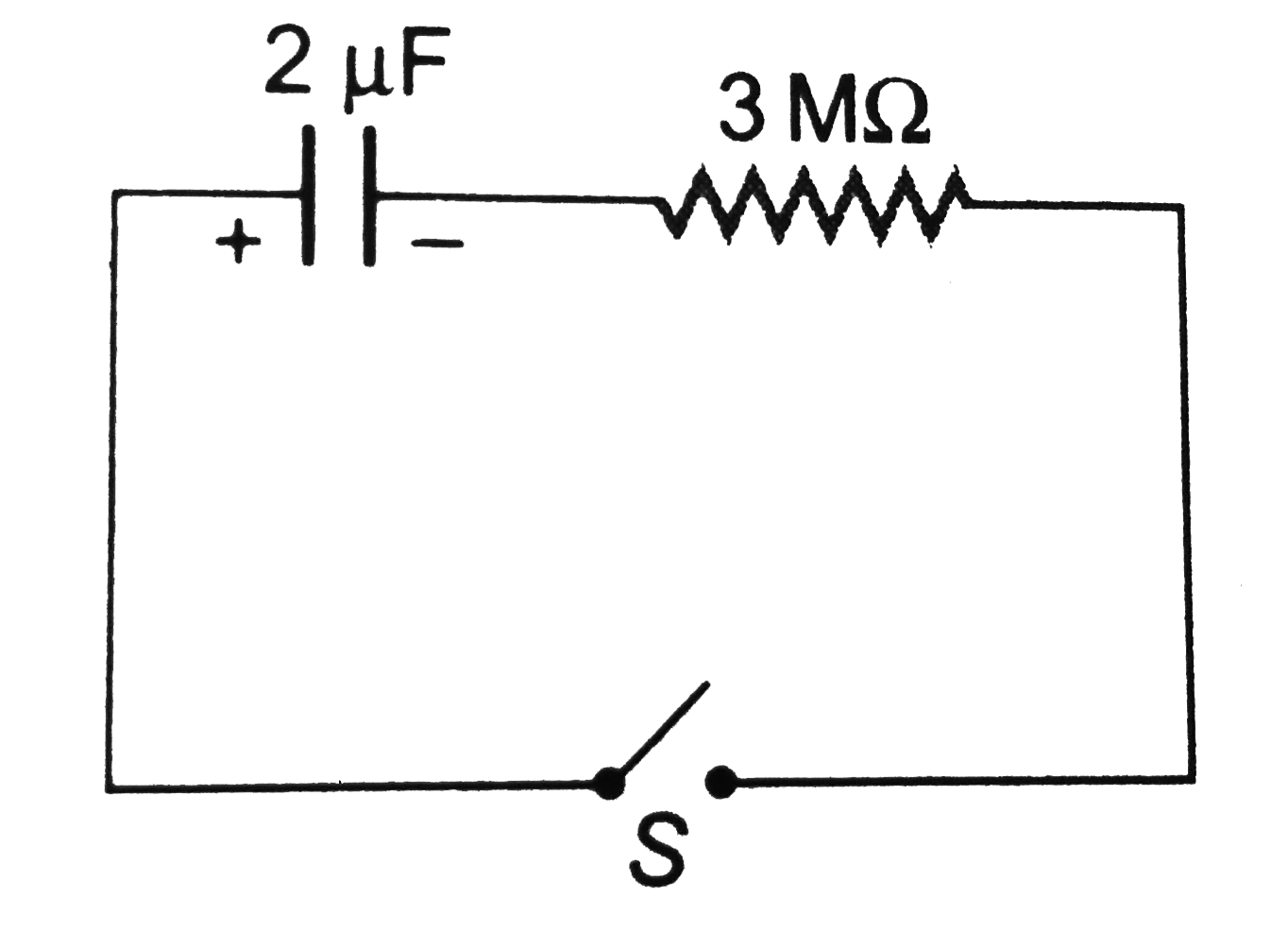Process 1 : In the circuit the switch S is closed at and the capacitor is fully charged to voltage v0 (i.e., charging continues for time T >> RC). In the process some dissipation (ED) occurs across the resistance R. The amount of energy finally stored in the fully charged capacitor is EC.
Process 2 : In a different process the voltage is first set to v03 maintained for a charging time T >> RC. Then the voltage is raised to 2V03 without discharging the capacitor and again maintained for a time T >> RC. The process is repeated one more time by raising the voltage to v0 and the capacitor is charged to the same final voltage v0 as in process 1. These two processes are depicted in Figure 2.
In Process 2, total energy dissipated across the resistance ED is :

A
EC=12ED
B
EC=2ED
C
EC=ED
D
EC=EDln2
Video Solution
Text Solution
The correct Answer is:C
Energy supplied by cell =V0(CV0)=CV20 , Energy stored in capacitor (Ec)=12CV20
∴ Energy dissipited across resistor (ED)=CV20−12CV20=12CV20∴Ec=ED
|
Similar Questions
Knowledge Check
Consider a simple RC circuit as shown in figure 1.
Process 1 : In the circuit the switch S is closed at t=0 and the capacitor if fully charged to voltage V0 (i.e., charging continues for time T>>RC). In the process some dissipation (ED) occurs across the resistance R. The amount of energy finally stored in the fully charged capacitor is Ec.
Process 2 : In a different process the voltage is first set to V03 and maintained for a charging time T>>RC. Then the voltage is raised to 2C03 without discharging the capacitor and again maintained for a time T>>RC. The process is repeated one more time by raising the voltage to V0 and the capacitor is charged to the same final voltage V0 as in Process 1.
These two processes are depicted in figure 2.

In process 2, total energy dissipated across the resistance ED is :AED=3(12CV20)BED=13(12CV20)CED=3CV20DED=12CV20Consider a simple RC circuit as shown in figure 1.
Process 1 : In the circuit the switch S is closed at t=0 and the capacitor if fully charged to voltage V0 (i.e., charging continues for time T>>RC). In the process some dissipation (ED) occurs across the resistance R. The amount of energy finally stored in the fully charged capacitor is Ec.
Process 2 : In a different process the voltage is first set to V03 and maintained for a charging time T>>RC. Then the voltage is raised to 2C03 without discharging the capacitor and again maintained for a time T>>RC. The process is repeated one more time by raising the voltage to V0 and the capacitor is charged to the same final voltage V0 as in Process 1.
These two processes are depicted in figure 2.

In process 1, the energy stored in the capacitor Ec and heat dissipated across resistance ED are related by :AEc=12EDBEc=EDln 2CEc=2EDDEc=EDLet q be the charge on the capacitor at any time t. The voltage V across the capacitor is
AVmsinωt=qCBVmcosωt=2VCCVmcosωt=q2CDVmsinωt=2qC
In the circuit shown, the capacitor C1 is initially charged with charge q0. The switch S is closed at time t = 0 . The charge on C2 after time t is

View SolutionAn uncharged capacitor is fully charged with a battery . The ratio of energy stored in the capacitor to the work done by the battery in this process is
View Solutionthe voltage across the capacitor, which is equal to V, is kept constant in the process.
View Solutionn the circuit shown in the figure, the capacitor C is charged to a potential Vo The heat generated and charge flow, in the circuit to when the switch S is closed, is

View SolutionIn the circuit shown in figure, the capacitor is charged with a cell of 5V.If the switch is closed at t=0, then at t=12s, charge on the capacitor is

View Solution
